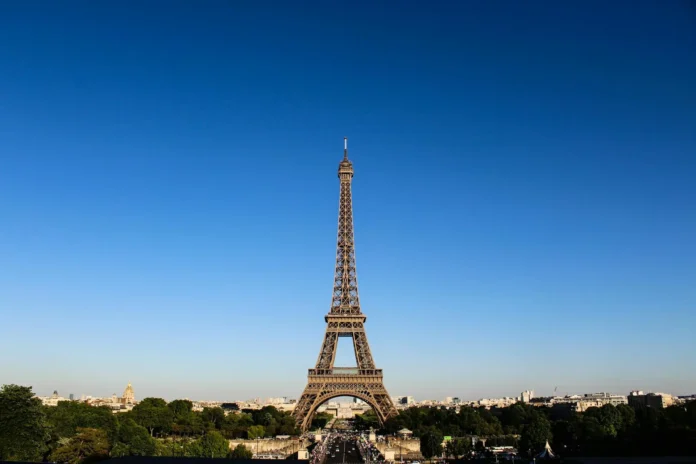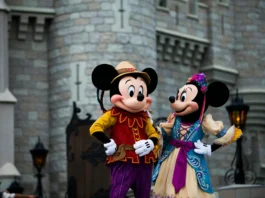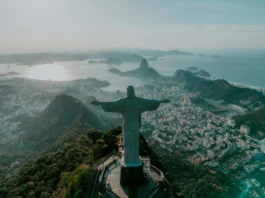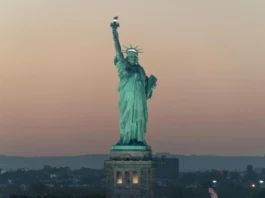“An Icon of Innovation, Elegance, and Eternal Romance“
Rising gracefully above the Parisian skyline, the Eiffel Tower stands as one of the most instantly recognizable landmarks in the world. Known in French as La Tour Eiffel, this iron colossus has come to symbolize not only the city of Paris but also the very essence of France—its art, architecture, history, and enduring romance. What began as a temporary structure for a world fair has become an enduring global icon and a beloved beacon of the City of Light.
Located on the Champ de Mars near the Seine River, the Eiffel Tower was designed by the French engineer Gustave Eiffel and built as the centerpiece for the 1889 Exposition Universelle (World’s Fair), commemorating the 100th anniversary of the French Revolution. At the time of its construction, it was the tallest man-made structure in the world, standing at 300 meters (984 feet)—a record it held for over 40 years until the Chrysler Building rose in New York City.
Constructed from over 18,000 wrought iron parts held together by 2.5 million rivets, the Eiffel Tower is a masterpiece of engineering. Its bold, industrial design was unlike anything the world had seen before. Initially met with criticism by prominent artists and intellectuals—who dubbed it an eyesore—it eventually won over Parisians and visitors alike with its lightness, symmetry, and commanding elegance.
The tower consists of three main levels accessible to the public. The first floor, at 57 meters, features a glass floor, restaurants, and exhibitions. The second floor, at 115 meters, offers one of the best panoramic views of Paris and houses the famous restaurant Le Jules Verne. The third and highest level, at 276 meters, can be reached by elevator and offers breathtaking, bird’s-eye views of the city and beyond—on clear days, you can see as far as 70 kilometers (43 miles).
From this lofty perch, landmarks such as Notre-Dame Cathedral, Sacré-Cœur, Les Invalides, Louvre Museum, and the Seine River come into view, forming a dazzling urban tapestry that changes with every hour. By night, Paris truly becomes the City of Light, and the Eiffel Tower glows with golden illumination. Since 1985, the tower has shimmered with thousands of sparkling lights every evening for five minutes at the start of each hour, creating one of the most magical scenes in Europe.
Beyond its function as a tourist attraction, the Eiffel Tower has played many roles over its long life. During World War I, it served as a military radio transmission tower. In later years, it became a crucial telecommunications hub. It has also been the site of scientific experiments, daredevil stunts, political demonstrations, and countless romantic proposals. In every era, it has evolved while remaining true to its original spirit of innovation and wonder.
The tower has inspired generations of artists, writers, filmmakers, and photographers. It has appeared in everything from postcards and paintings to novels, fashion shoots, and Hollywood films. To many, the Eiffel Tower is more than just a structure—it is a symbol of dreams, aspirations, and timeless elegance. Its silhouette evokes memories and emotions, whether seen up close or in a faraway frame.
More than 7 million people visit the Eiffel Tower each year, making it one of the most visited paid monuments in the world. Tickets are available for elevators or stairs to the second floor, with further access by elevator to the summit. The wait can be long during peak times, but the reward—standing atop this architectural marvel and overlooking Paris—is truly unforgettable.
For those who prefer to admire the tower from a distance, Trocadéro Gardens, across the Seine, offers one of the most stunning viewpoints, especially at sunrise or sunset. The Champ de Mars, beneath the tower, is perfect for a picnic or photo shoot. River cruises on the Seine also provide romantic and relaxing views of the tower as it towers above the city’s historic bridges and boulevards.
The Eiffel Tower’s maintenance is as impressive as its design. It is repainted every seven years, a job requiring 60 tons of paint to preserve its signature hue—originally Venetian red, then yellow-ochre, and now a custom shade known as “Eiffel Tower Brown.” It is repainted by hand, using brushes to ensure every detail is preserved and protected from corrosion.
The tower has also embraced sustainability and innovation in the 21st century. Recent upgrades include LED lighting, wind turbines, solar panels, and rainwater collection systems, demonstrating how even a 19th-century icon can adapt to modern environmental concerns. The goal is to reduce the monument’s carbon footprint while enhancing its visitor experience.
Beyond the physical structure, the Eiffel Tower stands as a cultural and emotional landmark, a place where millions have shared moments of wonder, reflection, and connection. It’s been the setting for world-changing broadcasts, peace rallies, and even a few marriage proposals that took place mid-ascent. For Parisians, it is part of their city’s heartbeat. For visitors, it is often the highlight of a lifetime.
In many ways, the Eiffel Tower reflects the spirit of Paris itself—bold, beautiful, and brilliantly complex. It captures the tension between tradition and modernity, between grand design and intimate emotion. It has weathered wars, trends, and changing tastes, but it remains as beloved today as it was controversial in its earliest days.
In 2024, the tower received global attention once again as one of the key symbols and venues during the Paris Olympic Games, reinforcing its enduring place at the crossroads of history and modernity. Whether bathed in blue, green, or gold for special events or simply glowing under the moonlight, the Eiffel Tower continues to captivate hearts across continents.
In conclusion, the Eiffel Tower is far more than just a structure of iron and rivets. It is a symbol of human achievement, cultural pride, and global connection. It reminds us that even the most unconventional ideas can become timeless masterpieces. In a city celebrated for its art, fashion, and history, the Eiffel Tower rises above all as the iron heart of Paris—steady, shining, and sublime.




